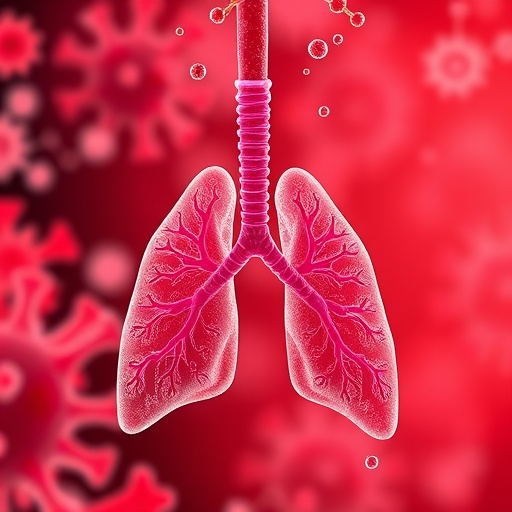Q and A with Intervention Researcher Taghrid Asfar, M.D. – University of Miami

Report on Cancer Prevention and Public Health Intervention Research
Researcher Profile: Dr. Taghrid Asfar
Dr. Taghrid Asfar, a public health professor at the University of Miami Miller School of Medicine and a researcher at the Sylvester Comprehensive Cancer Center, is conducting intervention research focused on reducing cancer risk. The research involves the development and testing of health communication strategies and behavioral interventions to address public health challenges associated with tobacco and alcohol use.
Alignment with Sustainable Development Goals (SDGs)
Dr. Asfar’s research demonstrates a strong commitment to advancing several United Nations Sustainable Development Goals (SDGs), particularly those related to global health, equitable work environments, and international cooperation.
- SDG 3: Good Health and Well-being: The research directly supports Target 3.4, which aims to reduce premature mortality from non-communicable diseases. By focusing on tobacco and alcohol, the work also contributes to Target 3.a, which calls for strengthening the implementation of the WHO Framework Convention on Tobacco Control.
- SDG 8: Decent Work and Economic Growth: An initiative to integrate smoking cessation services into the construction sector addresses Target 8.8, which seeks to promote safe and secure working environments for all workers.
- SDG 17: Partnerships for the Goals: Dr. Asfar’s foundational NIH-funded research in Syria exemplifies Target 17.9 by enhancing international support for effective and targeted capacity-building in developing countries to support national plans for implementing all sustainable development goals.
Key Research Initiatives and Projects
Tobacco Control and Smoking Cessation Strategies
A primary component of Dr. Asfar’s work is the implementation of evidence-based tobacco control measures, informed by clinical experience with the severe impact of nicotine addiction.
- International Capacity-Building: Dr. Asfar led the first multicenter clinical trial for smoking cessation in Syria. This NIH-funded project established a research base and implemented interventions within primary health care centers, contributing to global health partnerships under SDG 17.
- Workplace Interventions: A current project integrates free smoking cessation services into the construction sector. This initiative trains safety managers to deliver evidence-based interventions, thereby improving health and safety for workers in alignment with SDG 8.
Addressing Youth Vaping Through Health Communication
In response to the rising prevalence of vaping among young people, Dr. Asfar is investigating health communication strategies to prevent nicotine addiction, a critical objective for achieving SDG 3.
- The research involves the development and testing of evidence-based warning labels for e-cigarette products targeted at youth.
- This process included a comprehensive review of vaping’s health effects, followed by expert panel evaluation and testing within the target population.
Raising Awareness of Alcohol-Related Cancer Risks
In line with recent public health reports, Dr. Asfar’s research also addresses the link between alcohol consumption and cancer.
- This project utilizes Artificial Intelligence (AI) to develop and test educational messages designed to inform the public that alcohol is a carcinogen.
- The goal is to enhance public knowledge and promote informed health choices, contributing to the prevention of non-communicable diseases as outlined in SDG 3.
Challenges and Strategic Approaches
Dr. Asfar identifies significant obstacles in public access to effective, clinically-proven treatments for smoking. To address these gaps, her work advocates for strategic advancements in two key areas:
- Digital Health: Utilizing technology to broaden the reach and accessibility of cessation resources.
- Implementation Science: Focusing on the systematic integration of research findings and evidence-based practices into routine public health settings.
Analysis of Sustainable Development Goals in the Article
-
Which SDGs are addressed or connected to the issues highlighted in the article?
The primary Sustainable Development Goal (SDG) addressed in the article is:
- SDG 3: Good Health and Well-being. The entire article focuses on public health research and interventions aimed at preventing non-communicable diseases (NCDs), specifically cancer. Dr. Asfar’s work, as described, is centered on reducing major health risk factors like tobacco and alcohol use to improve population health and well-being. The article states her research “aims to reduce people’s cancer risk by developing and testing health communication strategies and behavioral interventions.” This directly aligns with the overarching goal of ensuring healthy lives and promoting well-being for all at all ages.
-
What specific targets under those SDGs can be identified based on the article’s content?
Based on the article’s discussion of cancer prevention, tobacco control, and reducing alcohol-related harm, the following specific SDG targets can be identified:
- Target 3.4: By 2030, reduce by one third premature mortality from non-communicable diseases through prevention and treatment and promote mental health and well-being.
- Explanation: The article’s core theme is cancer prevention. Dr. Asfar’s research focuses on “lifestyle factors that play a crucial role in influencing cancer risk, particularly focusing on smoking and alcohol consumption.” By developing interventions to help people quit tobacco and understand alcohol risks, her work directly contributes to the prevention of cancer, a major non-communicable disease, thereby aiming to reduce premature mortality associated with it.
- Target 3.5: Strengthen the prevention and treatment of substance abuse, including narcotic drug abuse and harmful use of alcohol.
- Explanation: The article highlights efforts to mitigate the health impacts of alcohol. It mentions that “Alcohol is a carcinogen and can cause seven cancers,” and that Dr. Asfar and her collaborators “used AI to develop educational messages about this risk.” This initiative is a clear example of strengthening the prevention of harmful alcohol use through public health communication.
- Target 3.a: Strengthen the implementation of the World Health Organization Framework Convention on Tobacco Control in all countries, as appropriate.
- Explanation: A significant portion of the article is dedicated to tobacco control efforts. Dr. Asfar’s work includes leading a “multicenter clinical trial in Syria… where we developed and tested a smoking cessation intervention,” implementing strategies for “integrating smoking cessation services into the construction sector,” and developing and testing “warning labels targeting young people” to combat vaping. These are all practical actions that strengthen the implementation of comprehensive tobacco control measures as outlined in the WHO Framework Convention.
- Target 3.4: By 2030, reduce by one third premature mortality from non-communicable diseases through prevention and treatment and promote mental health and well-being.
-
Are there any indicators mentioned or implied in the article that can be used to measure progress towards the identified targets?
While the article does not explicitly name SDG indicators, it implies several metrics that align with official indicators used to measure progress:
- Implied Indicator for Target 3.4: The article’s focus on reducing cancer risk by tackling smoking and alcohol consumption implies the need to measure the **prevalence of these risk factors**. The success of the described interventions would be measured by a reduction in the rates of smoking, vaping, and harmful alcohol use within the target populations (e.g., construction workers, young people). This relates to the indicator concerning mortality rates from NCDs, as reducing risk factors is a primary way to achieve that goal.
- Implied Indicator for Target 3.5: The article’s concern that “Most people in the U.S. don’t know about” the link between alcohol and cancer implies an effort to reduce the **harmful use of alcohol** (related to Indicator 3.5.2). The development of “educational messages” is a strategy aimed at changing behavior and ultimately lowering the prevalence of consumption patterns that are harmful to health.
- Implied Indicator for Target 3.a: The discussion on smoking cessation, vaping among youth, and tobacco use among construction workers directly relates to **Indicator 3.a.1: Age-standardized prevalence of current tobacco use among persons aged 15 years and older.** The interventions mentioned, such as providing “free smoking cessation services available to construction workers” and creating warning labels for e-cigarettes, are designed to directly reduce the prevalence of tobacco use in specific demographic groups.
-
Create a table with three columns titled ‘SDGs, Targets and Indicators” to present the findings from analyzing the article. In this table, list the Sustainable Development Goals (SDGs), their corresponding targets, and the specific indicators identified in the article.
SDGs Targets Indicators (as identified or implied in the article) SDG 3: Good Health and Well-being Target 3.4: Reduce premature mortality from non-communicable diseases (NCDs) through prevention and treatment. Prevalence of cancer risk factors, specifically rates of smoking and alcohol consumption, as the article focuses on preventing cancer by addressing these lifestyle factors. SDG 3: Good Health and Well-being Target 3.5: Strengthen the prevention and treatment of substance abuse, including the harmful use of alcohol. Prevalence of harmful use of alcohol, addressed through the development of educational messages about the link between alcohol and cancer. SDG 3: Good Health and Well-being Target 3.a: Strengthen the implementation of the WHO Framework Convention on Tobacco Control. Prevalence of current tobacco use (including smoking and vaping), addressed through smoking cessation interventions for specific populations (construction workers) and health communication strategies (warning labels) for young people.
Source: news.med.miami.edu
What is Your Reaction?
 Like
0
Like
0
 Dislike
0
Dislike
0
 Love
0
Love
0
 Funny
0
Funny
0
 Angry
0
Angry
0
 Sad
0
Sad
0
 Wow
0
Wow
0




















































.jpg.webp?itok=0ZsAnae9#)


























